Description
The instruction for medical use of Klavam Torgovoye medicine a name Klavam Mezhdunarodnoye the unlicensed name Is not present the Dosage form Powder for preparation of suspension for intake, 156 mg / 5 ml, 16.66 g / 100 ml Structure of 5 ml of suspension contain active agents: trihydrate amoxicillin (it is equivalent to amoxicillin of 125.000 mg) clavulanate potassium (it is equivalent to clavulanic acid of 31.250 mg), excipients: Mannitolum, sodium citrate, citric acid monohydrate, Natrium benzoicum, xanthane gum, silicon dioxide colloidal, fragrance mint DC 117 (Hemitsel-102), aspartame. The description the Granulated powder from white till whitish color, at cultivation with water forms homogeneous suspension of white color with taste of mint. Pharmacotherapeutic group Antibacterial drugs for system use. Penicillin in a combination with inhibitors beta laktamaz. Clavulanic acid and amoxicillin. The ATX J01CR02 code the Pharmacological Pharmacokinetics Key Pharmacokinetic Parameters properties of amoxicillin and clavulanic acid are similar. Amoxicillin and clavulanic acid in a combination do not influence at each other. Absorption: after intake both components of drug are quickly absorbed from digestive tract. Absorption of amoxicillin and clavulanic acid is optimum in case of administration of drug at the beginning of food. After administration of drug in its bioavailability makes 70%. Distribution: the maximum concentration in blood plasma is reached approximately in 1 h and makes for amoxicillin (depending on a dose) 3-12 mkg/ml, for clavulanic acid – 2 mkg/ml. Both components are characterized by the good volume of distribution in liquids and body tissues (lungs, a middle ear, pleural and peritoneal liquids, a uterus, ovaries). Amoxicillin also gets into synovial fluid, a liver, a prostate, palatine tonsils, muscle tissue, a gall bladder, secretion of adnexal bosoms of a nose, saliva, bronchial secretion. Get through a blood-brain barrier at the inflamed meninx. The maximum concentration in liquids of an organism is observed in 1 h after achievement of the maximum concentration in blood plasma. Active agents in low concentration are emitted with breast milk, get through a placental barrier. Linking with proteins of blood plasma for amoxicillin makes 17-20%, for clavulanic acid – 22-30%. Removal: amoxicillin is removed generally by kidneys by canalicular secretion and glomerular filtration. Clavulanic acid is actively metabolized in a liver and removed by glomerular filtration, partially in the form of metabolites. Small amounts can be removed through intestines and lungs. Elimination half-life of amoxicillin makes 1-1.3 h, clavulanic acid – 1.2 h. In a renal failure the removal of drug is slowed down therefore correction of the mode of dosing (dose decline and increase in intervals between administrations of drug) is necessary. The pharmacodynamics the Antibiotic of a broad spectrum of activity, contains semi-synthetic penicillin amoxicillin and inhibitor beta laktamaz clavulanic acid. Amoxicillin is active concerning many gram-positive and gram-negative microorganisms, inhibiting biosynthesis of peptidoglikan of a cell wall of a bacterium, leads to lysis and death of a cell. However amoxicillin collapses under the influence of a beta laktamaz and does not affect microorganisms which produce this enzyme. Clavulanic acid inhibits the majority clinically significant beta laktamaz, the produced Staphylococcus spp., Escherichia coli, Proteus mirabilis, Haemophilus influenzae, Moraxella catarrhalis, Bacteroides spp., i.e. microorganisms showing to rezistentnosit to penicillin and cephalosporins, thereby preventing an amoxicillin inactivation. Clavulanic acid is inactive concerning a beta laktamaz of 1 type produced by Enterobacter spp., Morganella morganii, Pseudomonas aeruginosa, Serratia spp., Acinetobacter spp. Clavulanic acid in the form of monodrug does not render clinically significant antibacterial effect. This combination provides high bactericidal activity of Klavam (including concerning strains of the microorganisms resistant to amoxicillin). Clavulanic acid, having higher affinity to a beta laktamaze, than amoxicillin, forms the stable deactivated complex with enzyme, interfering with enzymatic degradation of amoxicillin under the influence of a beta laktamaz. Thus, Klavam affects bakteritsidno a wide range of gram-positive and gram-negative bacteria (including strains which gained resistance to a beta laktamnym to antibiotics owing to products beta laktamaz). Klavam has bactericidal effect on the following microorganisms: Gram-positive aerobes: Enterococcus faecalis, Gardnerella vaginalis, Staphylococcus aureus (sensitive to Methicillinum), a coagualase – negative staphylococcus (sensitive to Methicillinum), Streptococcus agalactiae, Streptococcus pneumoniae1, Streptococcus pyogenes and other beta and hemolytic streptococci, the group Streptococcus viridans, Bacillius anthracis, Listeria monocytogenes, Nocardia asteroides Gram-negative aerobes: Actinobacillus actinomycetemcomitans, Capnocytophaga spp., Eikenella corrodens, Haemophilus influenzae, Moraxella catarrhalis, Neisseria gonorrhoeae, Pasteurella multocida anaerobic microorganisms: Bacteroides fragilis, Fusobacterium nucleatum, Prevotella spp. Microorganisms with the possible acquired resistance Gram-positive aerobes: Enterococcus faecium * Gram-negative aerobes: Escherichia coli, Klebsiella oxytoca, Klebsiella pneumoniae, Proteus mirabilis, Proteus vulgaris Microorganisms with natural resistance: gram-negative aerobes: Acinetobacter species, Citrobacter freundii, Enterobacter species, Legionella pneumophila, Morganella morganii, Providencia species, Pseudomonas species, Serratia species, Stenotrophomonas maltophilia, other: Chlamydia trachomatis, Chlamydophila pneumoniae, Chlamydophila psittaci, Coxiella burnetti, Mycoplasma pneumoniae. Mycobacterium chelonae is resistant to drug. * Natural sensitivity in the absence of the acquired resistance. 1 except for strains of Streptococcus pneumoniae resistant to penicillin Indications – upper respiratory tract infections and infections of an ear, a throat and a nose, for example the recurrent tonsillitis, sinusitis, average otitis which are usually caused by Streptococcus pneumoniae, Haemophilus influenzae, Moraxella catarrhalis and Streptococcus pyogenes – a lower respiratory tract infection, for example, of exacerbation of chronic bronchitis, the share pneumonia and bronchial pneumonia which are usually caused by Streptococcus pneumoniae, Haemophilus influenzae and Moraxella catarrhalis – an infection of an urinogenital path (cystitis, an urethritis, pyelonephritis) – the infections of skin and soft tissues which are usually caused by Staphylococcus aureus, Streptococcus pyogenes and types of the sort Bacteroides – an infection of bones and joints (the osteomyelitis caused by Staphylococcus aureus) the Route of administration and doses Drug is intended for use in pediatrics. The mode of dosing is set individually depending on age, body weight, function of kidneys and also from severity of an infection. Before prescribing of drug it is whenever possible necessary to allocate a microorganism and to define its sensitivity to antibiotics by a fence and the analysis of samples at the specific patient, especially in case of heavy infections. Klavam is recommended to accept at the beginning of food. It is not necessary to continue treatment more than 14 days without repeated assessment of a condition of the patient. Children since the birth to 12 years or with body weight less than 40 kg, depending on age and weight, specify the Dose in body weight mg/kg a day, or in milliliters of ready suspension. The recommended dosing mode from 20 mg / 5 mg/kg/days up to 60 mg / 15 the mg/kg/days divided into 3 receptions: in infections of light severity (tonsillitis, infections of skin and soft tissues) a daily dose of drug of 20 mg / 5 mg/kg/days – 40 mg / 10 mg/kg/days, in case of development of heavy infections (average otitis, sinusitis, lower respiratory tract infections and infections of an urinogenital path) are applied high doses of drug – 60 mg / 15 by mg/kg/days. There are no clinical these uses of Klavam of 125 mg / 31.25 mg / 5 ml over 40 mg / 10 mg/kg/days at children 2 years are younger. The table of the choice of a single dose of the drug Klavam depending on body weight. The body weight (kg) of 20 mg/kg/days 40 mg/kg/days 60 mg/kg/days * 2 0,5 ml 3 times in day of 1.0 ml 3 times in day of 1.6 ml 3 times in day of 3 0,8 ml 3 times in day of 1.6 ml 3 times in day of 2.4 ml 3 times in day of 4 1,1 ml 3 times in day of 2.1 ml 3 times in day of 3.2 ml 3 times in day of 5 1,3 ml 3 times in day of 2.7 ml 3 times in day of 4 ml 3 times in day of 6 1,6 ml 3 times in day of 3.2 ml 3 times in day of 4.8 ml 3 times in day of 7 1,9 ml 3 times in day of 3.7 ml 3 times a day – 8 2,1 ml 3 times in day of 4.3 ml 3 times a day – 9 2,4 ml 3 times in day of 4.8 ml 3 times a day – 10 2,7 ml 3 times in day of 5.3 ml 3 times a day – * For children with the body weight & gt, 6 kg at a daily dose of 60 mg/kg/days use Klavam 200 mg / 28.5 mg in order to avoid single administration of drug more than 5 ml. For children with body weight less than 40 kg the maximum daily dose makes 2400 mg of amoxicillin / 600 clavulanic acid mg. In need of purpose of higher daily dose of amoxicillin, it is necessary to appoint other dosage of Klavam in order to avoid reception of high doses of clavulanic acid needlessly. Patients with a renal failure of Correction of doses are based on the maximum recommended dose of amoxicillin and value of clearance of creatinine. Children Clearance of creatinine the Mode of dosing Klavama & gt, 30 ml/min. Correction of a dose is not required to 10-30 ml/min. 15 mg / 3.75 by mg/kg (1.2 ml) 2 times a day (at most 500 mg / 125 in mg (20 ml) twice a day) & lt, 10 ml/min. 15 mg / 3.75 the Patients who are on a hemodialysis of Correction of doses are based by mg/kg (1.2 ml) of 1 times a day (at most 500 mg / 125 mg (20 ml) once a day) on the maximum recommended amoxicillin dose. Children: 15 mg / 3.75 mg/kg (1.2 ml) of 1 times a day. Before a session of a hemodialysis it is necessary to accept one additional dose of 15 mg / 3.75 mg/kg (1.2 ml). For restoration of concentration of Klavama active agents in blood the second additional dose of 15 mg / 3.75 mg/kg (1.2 ml) should be accepted after the hemodialysis session. Patients with abnormal liver functions carry out Treatment with care, regularly carry out monitoring of function of a liver. The suspension route of administration Suspension prepares just before the first use. Powder should be dissolved in 92 ml of the boiled water cooled to room temperature gradually stirring up and adding water to a tag on a bottle. The ready volume of suspension is equal to 100 ml. The bottle should be turned and to stir up carefully before full dissolution. The prepared suspension – white or almost white color. The bottle should be stirred up well before each use. For an exact dosage of drug it is necessary to use a measured cap cover which needs to be rinsed well with water after each use. For more exact dosing of small volumes of suspension, especially at children is younger than 3 months, use of the standard disposable medical syringe is necessary. At treatment of children under 2 years, ready Klavama suspension can be dissolved with water half. Side effects Often (≥1/100, & lt, 1/10) – candidiasis – nausea, vomiting, diarrhea Nausea meets at use of high doses of drug more often. For decrease in extent of manifestation it is recommended to accept suspension at the beginning of meal. Infrequently (≥1/1000, & lt, 1/100) – dizziness, a headache – dyspepsia – moderate increase in level of liver ALT, nuclear Heating Plant enzymes – skin rash, an itching, a small tortoiseshell Seldom (≥1/10000, & lt, 1/1000) – a reversible leukopenia (including a neutropenia), thrombocytopenia – a multiformny erythema Does not know – a reversible agranulocytosis and hemolytic anemia, increase in a bleeding time and the index of a prothrombin time – a Quincke’s disease, an anaphylaxis, the syndrome similar to a serum disease, an allergic vasculitis – reversible superactivity and spasms – the antibiotiko-associated colitis (including pseudomembranous and hemorrhagic) – black hairy language (chronic hyperplasia of threadlike nipples of language) – change of coloring of a blanket of adamantine substance of tooth – hepatitis, cholestatic jaundice – Stephens-Johnson’s syndrome, a toxic epidermal necrolysis, bullous exfoliative dermatitis, sharp generalized exanthematous pustulyoz At development of these symptoms drug has to be cancelled. – interstitial nephrite, the Contraindication crystalluria – hypersensitivity to antibiotics of group of penicillin, to others beta laktamnym to antibiotics (cephalosporins, karbapenema, monobaktama) in the anamnesis – hypersensitivity to amoxicillin or clavulanic acid or other components of drug – an infectious mononucleosis – a lymphoid leukosis – a liver failure – the jaundice or an abnormal liver function caused by reception of antibiotics of group of penicillin (including combinations of amoxicillin/clavulanic acid) in the anamnesis – bronchial asthma, a senny pollinosis – phenylketonuria (in connection with presence of aspartame as a part of drug) Medicinal interactions At simultaneous use of Klavam and indirect anticoagulants (atsenokumarol and warfarin) is noted increase in a prothrombin time (PTV). Therefore this combination is appointed with care and need of carrying out the corresponding monitoring of PTV from a korrekttsiy dose of Klavam if necessary. At simultaneous use of Klavam with Allopyrinolum the risk of development of such side effects as a dieback increases. At simultaneous use Klavam enhances toxicity of a methotrexate due to decrease in removal of a methotrexate. At the patients accepting mikofenolat mofetit, at combined use with Klavam the concentration of an active metabolite of mikofenolovy acid when assigning an initial dose decreases approximately by 50%. Change of level of concentration of an initial dose can not correspond to changes of concentration of total exposure of mikofenolovy acid. The amoxicillin combination with rifampicin is antagonistic (mutual weakening of antibacterial action is noted). Klavam it is not necessary to apply along with bacteriostatic antibiotics (macroleads, tetracyclines), streptocides because of possible decrease in efficiency of Klavam. Klavam influences indestinal flora and leads to reduction of the return absorption, at simultaneous use Klavam reduces efficiency of oral contraceptives. Probenetsid reduces renal canalicular secretion of amoxicillin. Simultaneous use with Klavam can lead it to the increased amoxicillin level in blood, however, it is not observed concerning clavulanic acid. Therefore Klavam along with probenitsidy is not recommended to apply. Special instructions to Adults and children are more senior than 12 years or with body weight more than 40 kg are recommended use of this combination in tablets. Before an initiation of treatment Klavam it is necessary to collect the detailed anamnesis about whether were at the patient in the past of reactions of hypersensitivity to penicillin, cephalosporins or others beta laktamnye antibiotics. Also fatal reactions of hypersensitivity (acute anaphylaxis) on penicillin which came to light at patients with the previous hypersensitivity on penicillin more often are described serious, and sometimes. In case of allergic reaction it is necessary to stop treatment by Klavam and to begin alternative therapy. At development of serious reactions of hypersensitivity the patient should enter adrenaline immediately. Oxygenotherapy, the intravenous administration of steroids and ensuring passability of airways including an intubation can be required. In case of confirmation of the disease caused amoxicillin – sensitive strains, it is necessary to refuse a combination amoxicillin + clavulanic acid and to appoint amoxicillin separately. Klavam at high risk of possible resistance to a beta lactamnoma is not recommended to apply to a drug component. Klavam should not be applied to treatment of the pathologies caused by Streptococcus pneumoniae, having resistance to penicillin. With care appoint drug to the patients inclined to allergich
to sky reactions and also patients with the known hypersensitivity to antibiotics of a tsefalosporinovy row since there is a risk of development of cross sensitivity. Combined use of Allopyrinolum and amoxicillin increases a likelihood of development of skin allergic reactions. For the purpose of reduction of risk of development of side reactions from digestive tract it is necessary to take the drug at meal time. For prevention of discoloration of adamantine substance of tooth it is necessary to brush teeth after each intake of suspension. Long-term treatment by a combination amoxicillin + clavulanic acid can be followed by the overgrowth of microorganisms, insensitive to it. Cases of development of the antibiotiko-associated colitis against the background of reception of a combination amoxicillin + clavulanic acid which degree was from insignificant to life-threatening were reported. In this regard it is necessary to consider the possibility of development of colitis in patients with the diarrhea which developed in time or after reception of antibiotics. At confirmation of the diagnosis of colitis, Klavam has to be immediately cancelled, the patient has to consult with the doctor for performing necessary therapy. Cases of development of pseudomembranous colitis against the background of reception of antibiotics which weight varied from easy to heavy degree were revealed. Therefore it is necessary to remember possibility of this pathology at patients with diarrhea at reception of antibiotics or after the termination of a course of therapy. In case of development of long or considerable diarrhea, in the presence of pains in a stomach, treatment by Klavam has to be immediately stopped, and to patients further examination is performed. With care it is necessary to apply Klavam at patients with an abnormal liver function, especially at those who at the same time take the drugs known as potentially influencing a liver. Signs and symptoms of damage of a liver usually arise in time or right after an initiation of treatment, but in certain cases can not be shown within several weeks after the therapy termination. As a rule, they are reversible. Hepatic violations can be very serious, and in extremely exceptional cases was reported about death. Therefore periodic control of function of a liver is required from patients with abnormal liver functions. When prescribing drug to patients with reduced function of kidneys or when using high doses the development of spasms is possible. Adequate correction of the mode of dosing or increase in intervals between dosing is required from patients with heavy renal failures. Because at a large number of the patients with an infectious mononucleosis and a lymphoid leukosis receiving ampicillin observed appearance of erythematic rash that complicates diagnosis of a disease. Use of antibiotics of group of ampicillin for such patients is not recommended. At the patients receiving a combination amoxicillin + clavulanic acid the increase in a prothrombin time therefore at simultaneous use of Klavam and anticoagulants it is necessary to carry out the corresponding monitoring is occasionally observed. Klavama suspension contains aspartame – a phenylalanine source therefore patients are not recommended to use drug with phenylketonuria. At use Klavama is possible false positive reaction when determining level of glucose in urine when using a reactant of Benedict or Fellinga solution (recommend to apply enzymatic reactions with glucose oxydas). It is necessary to avoid co-administration with Disulfiramum. Clavulanic acid can be the cause of nonspecific binding of IgG and albumine with a membrane of erythrocytes that leads to false positive reaction of Koombs. Pregnancy and the period of a lactation Suspension for intake is intended for use in pediatrics. There Is no feature of influence of medicine on ability to run the vehicle or potentially dangerous mechanisms data, however, in connection with a possibility of development of side reactions (allergy, dizziness, spasms) it is necessary to be careful. The overdose is not available messages about a lethal outcome or emergence of life-threatening side effects owing to drug overdose. Symptoms: an abdominal pain, diarrhea, vomiting, it is possible also uneasiness, excitement, insomnia, dizziness, in some cases – at patients with reduced function of kidneys or when using high doses the development of spasms is possible. The crystalluria leading to development of a renal failure. Treatment: in case of recent administration of drug (less than 4 h) it is necessary to carry out gastric lavage and to appoint activated carbon for drug absorption reduction, if necessary carry out symptomatic therapy, correction of water and electrolytic balance the hemodialysis Is effective. A form of release and packing On 16.66 g in the bottles of orange glass corked by the screwing-up aluminum cover. The dosing cap from PVC is applied to a bottle. On 1 bottle together with the instruction for medical use in the state and Russian languages put in a pack from cardboard. To Store storage conditions in the dry, protected from light place at a temperature not above 25 °C. To store out of children’s reach! 2 years not to use a period of storage after the expiration date specified on packing. Prescription status According to the prescription Producer Alkem Laboratories Ltd, Alkem House “Devashish” Senapati Bapat Marg Lower Parel, Mumbai-400013, India, Ph. / fax: 0091-0260-2230470,230570 The owner of the registration certificate of Alkem Laboratories Ltd, India
to Develop the Address of the organization accepting in the territory of the Republic of Kazakhstan claims from consumers on quality of products (goods) Representative office of Alkem Laboratories Ltd in RK acting through the authorized representative Sandip Kumar Dubey





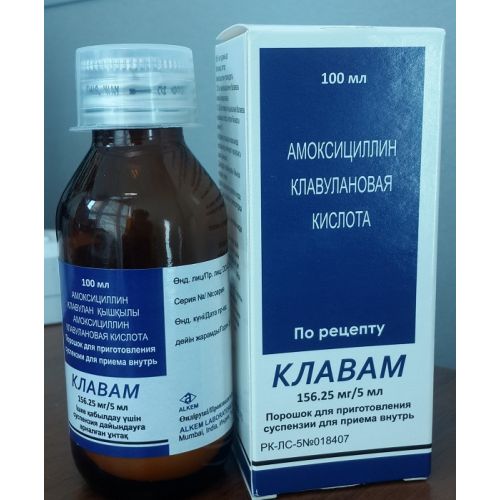
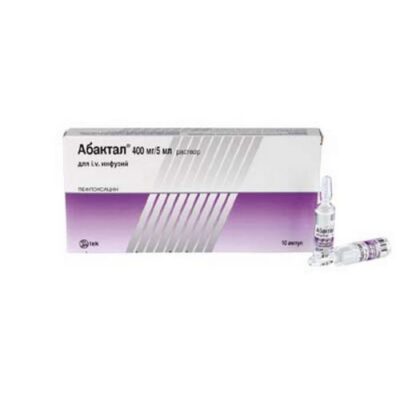
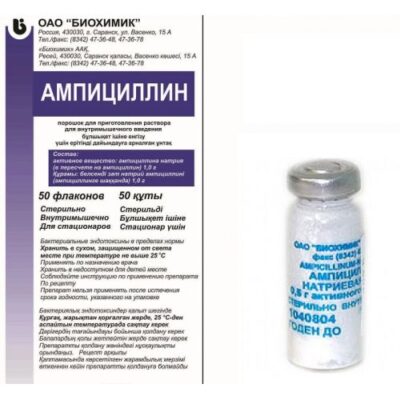
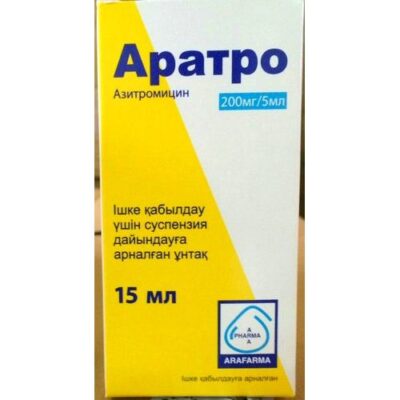
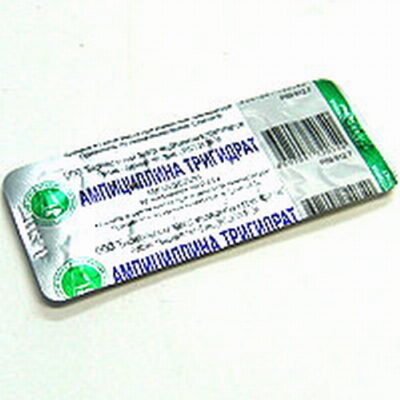
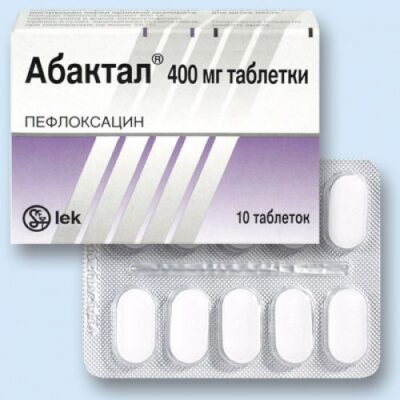
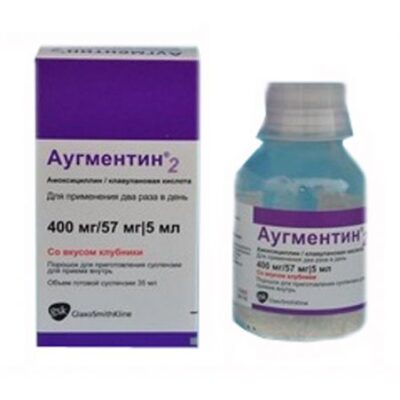
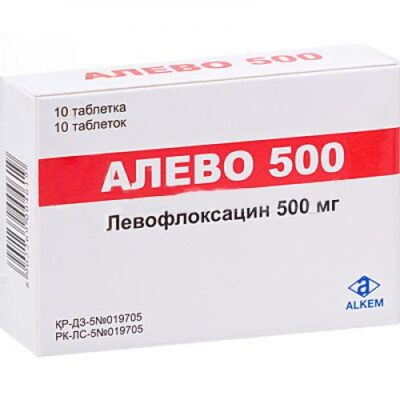
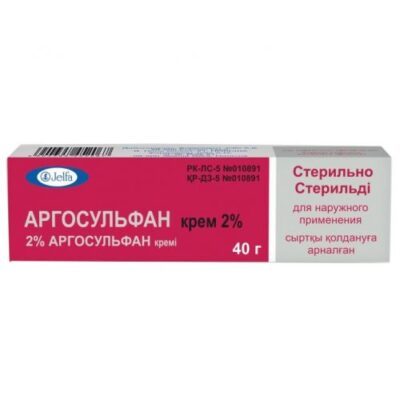
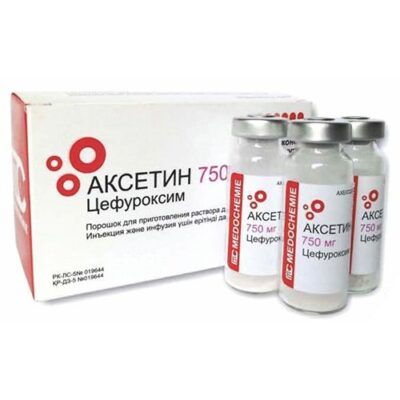
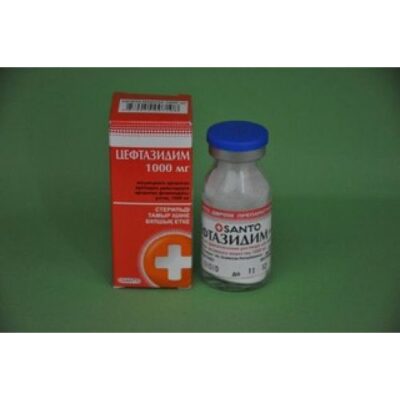






Reviews
There are no reviews yet.